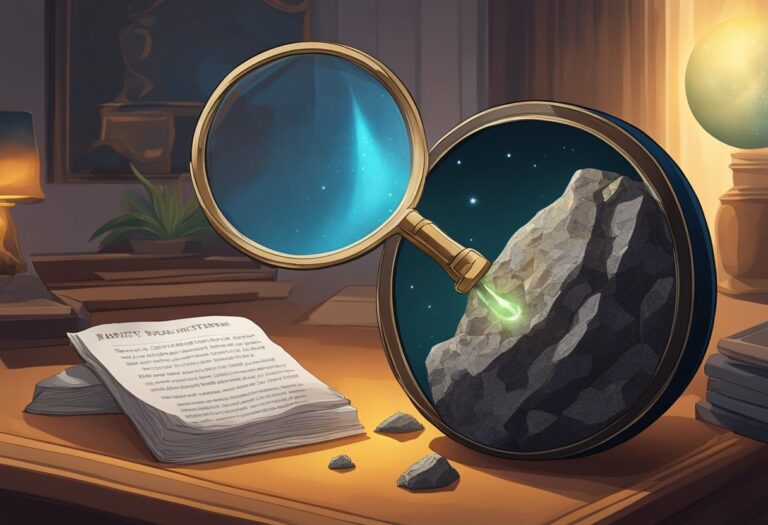Stargazing enthusiasts and casual sky-watchers alike have the unique opportunity tonight to witness the spectacular journey of a comet as it makes its way across the night sky.
Known for their brilliant tails and sometimes unpredictable appearances, comets evoke a sense of wonder and curiosity. To maximize the chances of seeing the celestial wanderer, it’s crucial to understand when and where to look.
The best time to observe a comet typically falls after sunset and before sunrise, when the sky is darkest. Factors such as the comet’s proximity to Earth, its position relative to the sun, and the amount of light pollution in your area all play significant roles in the visibility of these icy travelers. Ensuring that you are looking in the right direction, aided by a stargazing app or a star chart, increases your chances of a successful sighting.
Preparing with the proper gear, including binoculars or a telescope and dressing warmly if you’re in a cooler climate, can enhance your viewing experience.
For optimal comet viewing tonight, observe after sunset and before sunrise in a dark location. Visibility depends on the comet’s proximity to Earth, its position relative to the sun, and local light pollution. Use binoculars or a telescope and a stargazing app for guidance.
Comet Viewing Fundamentals

In pursuit of an unforgettable astral experience, equipping yourself with knowledge about comet behavior and viewing conditions is essential.
Understanding Comets
Comets are cosmic snowballs of frozen gases, rock, and dust that orbit the Sun. When they get close to the Sun, they heat up and display a glowing coma (a temporary atmosphere) and sometimes a tail. These features are critical in making them observable from Earth. For example, Comet Hale-Bopp was particularly notable for its exceptionally bright and long-visible tail.
Visibility Factors
Visibility of a comet is influenced by several factors:
- Sky darkness: Aim for nights when the Moon is at a new phase or below the horizon to avoid light pollution.
- Comet’s position: The comet’s proximity to the Sun in its orbit determines its visibility from Earth.
- Local weather: Clear skies with minimal atmospheric disturbance offer the best viewing conditions.
- Observation time: The best time to see a comet usually is just before dawn or after dusk when the sky is dark enough to see celestial bodies clearly.
- Equipment: While some comets are visible to the naked eye, others may require binoculars or a telescope for a better view.
When these elements are favorable, your chances of a successful comet viewing increase significantly.
Optimal Viewing Times
To ensure you catch the celestial spectacle, two major factors affect your viewing experience: the time of night and the best viewing dates. Understanding these will enhance your chances of a clear and memorable sighting.
Time of Night
Prime hours for viewing comets are typically after midnight and before dawn. This is when the sky is darkest, especially if you’re away from city lights.
Best Viewing Dates
To see the comet at its brightest, check for the day it’s closest to Earth. This perigee often coincides with peak visibility, offering the best view. Here’s an example:
- January 17: High visibility
- January 18: Moderate visibility
- January 19: Low visibility
Consider the moon’s phase as well, as a full moon can interfere with comet visibility.
Preparation for Comet Watching
To ensure a successful comet watching experience tonight, focus on selecting a prime location and gathering the necessary equipment.
Location Planning
- Dark Skies: Seek out a spot away from city lights to reduce light pollution. A resource like the International Dark Sky Association can help you find certified dark sky places.
- Wide Horizons: Choose a location with an unobstructed view of the sky, particularly in the direction where the comet will appear.
Equipment Essentials
- Binoculars or Telescope: A pair of binoculars or a small telescope will enhance your view. For detail retrieval in comet watching, consider magnifications of 7x to 10x for binoculars or higher magnifications with a telescope.
- Star Charts: Use up-to-date star charts or mobile apps to help locate the comet. Apps like Sky Guide provide real-time tracking of celestial objects.
Safety and Etiquette
When planning to observe a comet, consider both personal safety and environmental impact to ensure a positive experience for yourself and others.
Viewing Safety Tips
- Personal Equipment: Use appropriate eye protection when looking at the sky, especially if using binoculars or a telescope. A sudden glance at the moon or bright lights can cause temporary vision issues.
- Guidance: Follow local astronomy club guidelines for safely viewing celestial events which may include the use of filters or specific viewing techniques.
Environmental Considerations
- Light Pollution: Minimize light pollution by using red-tinted flashlights and avoid shining lights directly up into the sky or at other viewers.
- Natural Habitat: Be mindful of the natural surroundings; stay on designated paths and observe from established viewing areas to reduce ecological disturbance.
Frequently Asked Questions
When looking to observe a comet, knowing the timing and position is crucial for a successful viewing experience. This section addresses common queries to ensure you catch a glimpse of these celestial wanderers.
How can I find the current position of the comet tonight?
You can use various astronomy apps or websites that track celestial events to find the comet’s current location in the night sky. Some may even provide customized guidance based on your geographic region.
What are the peak viewing times for comets in the night sky?
Peak viewing times for comets typically occur when the sky is darkest, usually a few hours after sunset and before sunrise. Avoid light pollution by heading to a darker spot for better visibility.
Is there a live stream available for comet observation tonight?
Several astronomy organizations and observatories offer live streams for major celestial events. Check their websites or social media channels for any announcements on comet live streams.
How can I view the comet tonight if I’m located in California?
In California, look for comet observation times that coincide with clear, dark skies—often later in the evening. Various local astronomy clubs may also host viewing parties or provide updates on the best viewing times.
What strategies can I use to best view comets from my location?
To best view comets, find a dark location away from city lights, give your eyes time to adjust to the darkness, use a star chart or an app to locate the comet, and if possible, use binoculars or a telescope for a better view.
Are there any specific comet sightings anticipated in the USA tonight?
Check local astronomy bulletins or news for any specific comet sightings expected in the USA tonight. During certain periods, recurrent comets, like Halley’s Comet, may be visible and information on such events is often widely disseminated.



![Best Telescopes for Beginners: Top [year] Picks](https://observationhobbies.com/wp-content/uploads/2024/01/Best-Telescopes-for-Beginners-768x525.png)
![Best Deals on Telescopes: Top [year] Sales](https://observationhobbies.com/wp-content/uploads/2024/01/Best-Deals-on-Telescopes-768x525.png)
![Best Star Viewing in the World: Top [year] Spots](https://observationhobbies.com/wp-content/uploads/2024/01/image-367-768x525.jpeg)
![Sky Watcher EvoStar 100 APO Review [year]](https://observationhobbies.com/wp-content/uploads/2024/01/Sky-Watcher-EvoStar-100-APO-Review-768x525.png)
